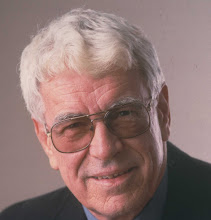On March 4, 1957, the US Navy blimp Snow Bird took its departure from South Weymouth, Massachusetts. Travelling at 35 knots, burning seven gallons of fuel an hour, it crossed the ocean to Europe, then travelled south to Africa.
Over Morocco, six days out, Commander Jack Hunt asked his technical officer, John Fitzpatrick, whether the airship could make it back across the Atlantic. Fitzpatrick did his calculations and said Yes. The Snow Bird flew to the Lesser Antilles and continued up the island chains of the Caribbean to Florida. It was heading up the US east coast when it was ordered to land at Key West.
The Snow Bird had visited four continents, using less fuel than an airliner uses just taxiing from the terminal to the runway. It had coped with heavy winds, snow, ice, tropical storms, thick fog and scorching sun. When it landed, the ship had covered 9448 miles and remained continuously aloft for 11 days – the longest unrefuelled flight ever made, both in terms of time and distance.
I think the Snow Bird represents the future of air travel. Like the electric car, it's an historic technology with a new and urgent relevance.
George Monbiot, the British pundit and author of Heat: How to Stop the Planet from Burning, recently pointed out that if we are truly going to hold the rise in global temperatures below the crucial threshold of 2º, we will actually have to decarbonize the entire world economy. He thinks we can do it.
“By switching the whole economy over to the use of electricity,” he writes, “and by deploying the latest thinking on regional supergrids, grid balancing and energy storage, you could run almost the entire energy system on renewable power. The major exception is flying.” We cannot expect “battery-powered jetliners.”
No, but we can still fly. Remember Count Ferdinand von Zeppelin, the developer of the huge rigid airships which became known as zeppelins. In 1909 the Count began passenger air services within Germany. Between the two world wars, his company pioneered international air travel with great success, running a scheduled service from Lakehurst, New Jersey to Friedrichshafen, Germany.
The zeppelins reached Europe in two and a half days, at 75 miles an hour. They floated along in almost complete silence, at altitudes low enough for passengers to watch animals, houses and ships. In nine years of service, one airship – the Graf Zeppelin – 17,000 hours in the air, carried 13,000 passengers, and flew more than a million miles, including a circumnavigation of the world with stops only in Tokyo and New Jersey.
The zeppelins were almost immune to interruption by the weather. They boasted lounges, dining rooms and staterooms. The Hindenburg a grand piano. They were so stable that a milk bottle balanced upside down in Germany once arrived undisturbed in New Jersey.
The zeppelins had only one fatal accident, but that event killed the whole industry. On May 6, 1937, the Hindenburg fire while mooring at Lakehurst. The hydrogen inside her skin burned the ship to white ashes in 34 seconds. Thirty-six people died, including 13 passengers, the only passengers ever to die in an airship. Sixty-seven people survived, but reporters and cameramen turned the flaming Hindenburginto an iconic image of disaster. No zeppelin ever carried passengers again.
Ironically, the Hindenburgwas designed not for hydrogen, but for helium – which actually snuffs fires rather than feeding them. The only country that had helium, however, was the United States. During World War I, the German zeppelins had terrorized the English, lurking in the clouds and bombing market towns. Not surprisingly, the US refused to sell helium to Nazi Germany.
And thus the airships died, at the height of their success.
I learned their story largely from John McPhee's wonderful 1973 book The Deltoid Pumpkin Seed, an account of an attempt to create a hybrid airship using aerodynamics as well as helium to achieve lift. That project faded away, but the larger story continues. Several companies are producing and developing airships, and with today's materials, they can be far larger and far lighter. A model built by a high-school teacher in Utah (www.hyperblimp.com) is so light and transparent that it looks like a ghost cigar in the sky.
Airships represent transportation without airports, roads, railroads, tunnels, bridges, harbours. They are road-less trucks and buses that can operate anywhere – in the Third World, in the Arctic, over seas and swamps and deserts. Small airships are already used for communications, surveillance, rescue, photography and eco-tours. Big ones could carry commuters, bulk freight, saw-logs, prefabricated houses and bridges. They could be warehouses in the sky, platforms for enormous arrays of solar collectors. Powered by sunlight, they would represent something approaching sustainable air travel.
Bye-bye Boeing? Okay. But that doesn't mean we can't fly.
-- 30 --
Subscribe to:
Post Comments (Atom)

No comments:
Post a Comment